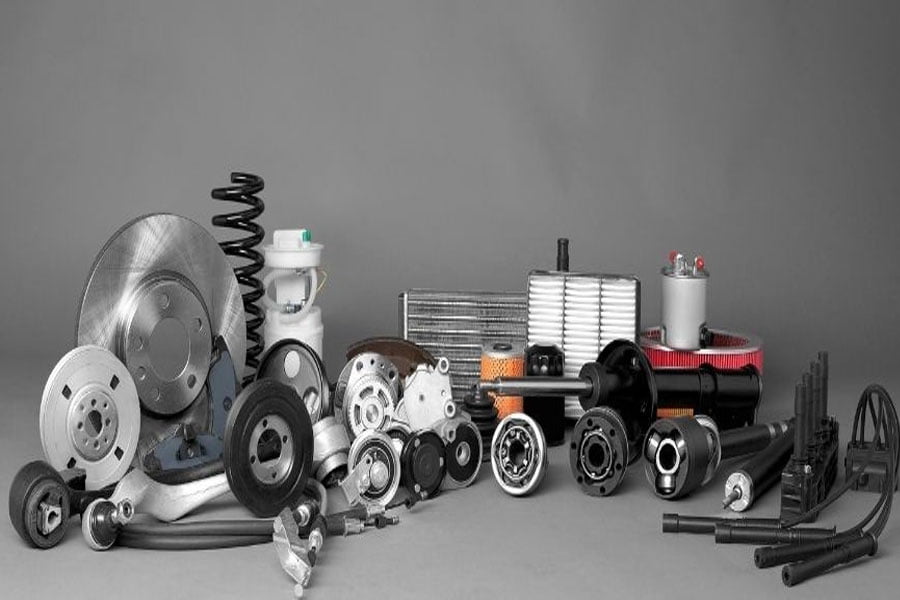As a material handling manager, you have many operational decisions to make. Choosing the best forklifts and sourcing the right parts, such as hoses, tires, and lift chains, will keep your business running efficiently and effectively. For instance, hoses, vital for hydraulic functions, should be durable and withstand high pressures. Renowned suppliers like The Hose Shop offer OEM hoses made under strict production standards. Along with other OEM parts like robust tires and strong lift chains, they surpass the quality of aftermarket alternatives, ensuring longevity and reducing maintenance costs for your equipment. Read on to find out the best ways to identify the ideal forklift components!
OEM Parts
The forklift parts you choose will play a large part in keeping your operation running smoothly. The parts’ quality will determine how efficiently your lift truck performs, how much downtime your associates experience, and how safe operations are for your team.
Choosing Kalmar forklift parts with the best compatibility with your machine will prevent unnecessary repairs and breakdowns, which can cost time and money. It is also essential to consider the impact a lower-quality forklift part will have on your operation and budget in the long run.
For example, purchasing tires for your forklift that do not fit the machine will lead to heat and friction, which reduces the tire’s life and can damage your equipment. This is why it is crucial always to ensure that the forklift parts you purchase are of the highest quality and backed by a warranty.
Aftermarket Parts
Forklifts are a staple in warehouses across industries. They are vital to efficiently moving products and materials for shipping, storage, and other operations within a company. Larger companies often have entire fleets of forklifts that they rely on daily.
Every forklift component takes wear and tear damage regularly, and keeping them all operating correctly is critical. Any malfunctions can lead to inefficient work, lost productivity, and increased downtime for the company.
The most commonly used forklift parts include the cab, mast, and forks. The cab houses the steering wheel, brake, gas pedals, and controls for the forklift. It also contains safety devices to ensure that operators operate the forklift correctly. The mast is responsible for lifting and lowering the load, and it comes in different sizes to accommodate various loads. The forks are long extensions (like arms) that attach to the mast and support the load.
Online Retailers
As with any vehicle, a forklift’s main components must be replaced periodically. When these parts break down, you have a forklift that isn’t working, which means lost productivity and potential business losses.
Like a car, a forklift has a truck frame which is the metal skeleton to which most of the forklift’s significant components are attached – the wheels and axles, engine, mast, counterweight, and overhead guard. Some forklifts also have tanks for fuel or hydraulic fluids built into their frame.
For example, a forklift can have either an internal combustion engine or an electric motor powered by rechargeable batteries. The latter option has fewer parts and is easier to maintain. Conversely, the former option has more complex mechanical components and is more likely to break down. Sourcing forklift parts that are durable and reliable is vital to maintaining your forklift’s functionality and longevity. That’s why dealing with a supplier with the right relationships with top manufacturers is essential.
Local Suppliers
Local suppliers provide an excellent opportunity for businesses to reduce supply chain costs and ensure products meet specific needs. Purchasing locally can result in more reliable delivery times, reduced transportation expenses, and lower inventory storage costs. In addition, business owners can visit local suppliers face-to-face to discuss their requirements and get answers quickly.
Having suitable forklifts and materials handling equipment in your warehouse can make all the difference in increasing productivity and reducing overall operational costs. Buying the wrong size of forklifts creates inefficiencies, slowing operations and wasting money on unnecessary fuel usage.
Suitable forklifts can save your business money by decreasing operating hours and helping prevent accidents caused by unsuitable machinery. If your forklifts aren’t operating at their peak performance, investing in a new fleet could be time.











